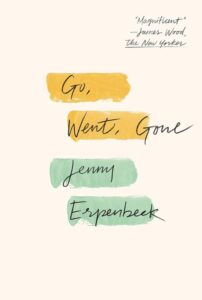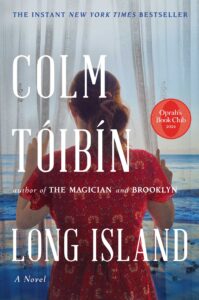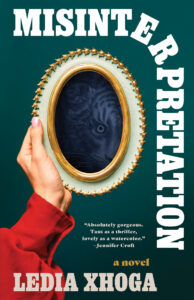This first appeared in Lit Hub’s Craft of Writing newsletter—sign up here.
Article continues after advertisement
The elevator at the Center for Fiction in Brooklyn is papered floor to ceiling with novel pages and literary quotes. The likes of Toni Morrison and Philip Roth offer emotional support and inspiration to emerging writers on their way to their second-floor desks, hours of drudgery, and hopefully, in due course, publication of acclaimed books. I’d always glanced at the wall writings absentmindedly, while fumbling for my access card or silencing my phone, until the day an A.M. Homes quote stood out in sharp relief.
If you don’t write the book you’re meant to write, everything breaks.
Like everyone else at the Center, I’d been struggling to finish a novel, a dual narrative in which two women’s stories intersected in unexpected ways. An Albanian born interpreter with little regard for rules and boundaries gets overly involved in the lives of the immigrants she works with, jeopardizing her marriage and mental health. A sheltered, American young woman moves to New York City looking for excitement, encountering odd roommates and a troubled love interest. The novel unfolded alternating between these two stories. There were striking parallels between the two women’s lives. Words spoken by strangers in the interpreter’s story became significant in the other plot. Characters pronounced dead in the earlier narrative turned up alive and well in the later one. Perhaps the stories were alternate versions of the same woman’s life, or maybe one was a fictional universe a character had created. The possibilities varied, but the relation between the two women was to remain elusive. The narrative would pivot and turn on an invisible hinge.
Even now, when the bright and futile glow of hindsight is shining down on me, the idea sounds appealing. But I had tried to make the dual narrative work for nearly a year. I had a suspicion that, in spite of all my revisions, I was still at a first draft. The story didn’t flow. The comments I received from a novel writing workshop confirmed my fears. The narrative was choppy. The moment something exciting was about to happen, the other universe intruded, presenting another dilemma or character that tasked the reader’s willingness to be open. The writing was uneven, stronger in some pages but less self-assured in others. Some said I had described things broadly. Others that I had gotten lost in details. The problem was the two stories were refusing to get along. My experimental structure was exciting as a concept but, like a vacation to a tropical locale with good friends, their spouses, and their kids, entirely lost its luster in practice.
Even before the quote on the wall started to haunt me, I’d wonder about the reasons for the dual narrative. I enjoyed linear stories, but experimentation also intrigued me. Was my inspiration Kieślowski’s The Double Life of Veronique, a friend asked? I’d seen that movie so long ago I wasn’t even sure I had seen it. Cortázar’s Hopscotch came to mind. It lived up to its title by allowing readers to jump through different versions of the novel, the structure in tandem with the chaos the characters experience. What did the dual structure reveal about my characters? I couldn’t tell yet. The deliberate arrangement of text was drawing the reader into a literary maze, but the effort to accomplish it was distracting me from developing the characters. If the “expandable” chapters at the end of Hopscotch revealed a deeper truth, my setup seemed to conceal it.
In order for anyone to find out if a novel is any good, the novel has to first sound good. Whenever I described my idea to others, the responses were enthusiastic. There’s a certain cachet that comes with an unusual structure, with taking a stab at something new. But it was equally true that novels written by ingenious minds, with state-of-the-art structures, didn’t grab me if the characters amounted to vague descriptions and placeholders. I’d always thought that Calvino had way more fun writing If on a Winter’s Night a Traveler than I had reading it.
I took my time before coming to a decision. Here’s a quote not written on that wall: if you wake up wanting to google sunk cost fallacy, have a serious think about your commitments.
BOOK RECOMMENDATIONS FROM LEDIA ZHOGA

 I decided to let go of one of the stories, but the scenes that related to the young woman who moves to New York City amounted to half of my novel. I saved those pages in another file. I could put them back anytime, I reassured myself, knowing I wouldn’t. I turned my attention to the interpreter’s story, further developing the characters I had there, the interpreter’s relationship to her husband Billy and the immigrants she encounters. I had only about 30,000 words at that point, but the dramatic seeds of what’s to come were there. I had already written the scene where the interpreter and Leyla, a Kurdish poet she befriends, leave the KGB Bar. During their walk to the subway, Leyla fears they’re being followed and photographed by her husband’s cousin, which doesn’t turn out to be the case in that scene. But the potential threat was there, and it made sense to follow that thread and exploit it in order to illuminate the interpreter’s compulsion to help as a deeply ingrained and at times dysfunctional character trait. Wanting to make sure I was on the right track, I delayed writing the scene where she follows Leyla’s stalker Rakan to the shoe store. But my hunch always seemed right—she had to get close to him. After writing the shoe store scene where the interpreter gets Rakan’s phone number, the novel practically wrote itself. It only took me a few months to finish it.
I decided to let go of one of the stories, but the scenes that related to the young woman who moves to New York City amounted to half of my novel. I saved those pages in another file. I could put them back anytime, I reassured myself, knowing I wouldn’t. I turned my attention to the interpreter’s story, further developing the characters I had there, the interpreter’s relationship to her husband Billy and the immigrants she encounters. I had only about 30,000 words at that point, but the dramatic seeds of what’s to come were there. I had already written the scene where the interpreter and Leyla, a Kurdish poet she befriends, leave the KGB Bar. During their walk to the subway, Leyla fears they’re being followed and photographed by her husband’s cousin, which doesn’t turn out to be the case in that scene. But the potential threat was there, and it made sense to follow that thread and exploit it in order to illuminate the interpreter’s compulsion to help as a deeply ingrained and at times dysfunctional character trait. Wanting to make sure I was on the right track, I delayed writing the scene where she follows Leyla’s stalker Rakan to the shoe store. But my hunch always seemed right—she had to get close to him. After writing the shoe store scene where the interpreter gets Rakan’s phone number, the novel practically wrote itself. It only took me a few months to finish it.
The story I put aside far from disappeared. The two narratives had been crammed together for so long and, by my own design, had tainted each other. But I didn’t delete those reflections of the other narrative since they added to the variety of texture and color in the novel. The young woman wearing vintage outfits, the elderly performer playing live piano in Washington Square Park, the dress up parties, the absinthe cocktails, the American and Indian version of the Dirty Dancing movies, all originated in the other narrative. Like figures inside an anamorphic projection, that other story is present, although only visible from a special vantage point. Those brief gateways to a fantastical world complement the theme of duality in the novel and became part of the current plot.
One of my MFA professors used to be fond of saying that the story is always smarter than the writer. The pain of deleting one of the storylines revealed that to be true. But learning how to navigate a circuitous route, the ability to make a tough decision and improvise, are other necessary writerly skills. The novel wouldn’t have been the same without taking the wrong exit. In Misinterpretation, glimpses of what was deleted intensify the shimmer of the unknown, alluding to the ubiquitous possibilities that surround us when we immerse ourselves in new people and cultures. It is transformation we all turn to fiction for, an open challenge to the way we think and are.
____________________________________________

Misinterpretation by Ledia Xhoga is available now via Tin House.
